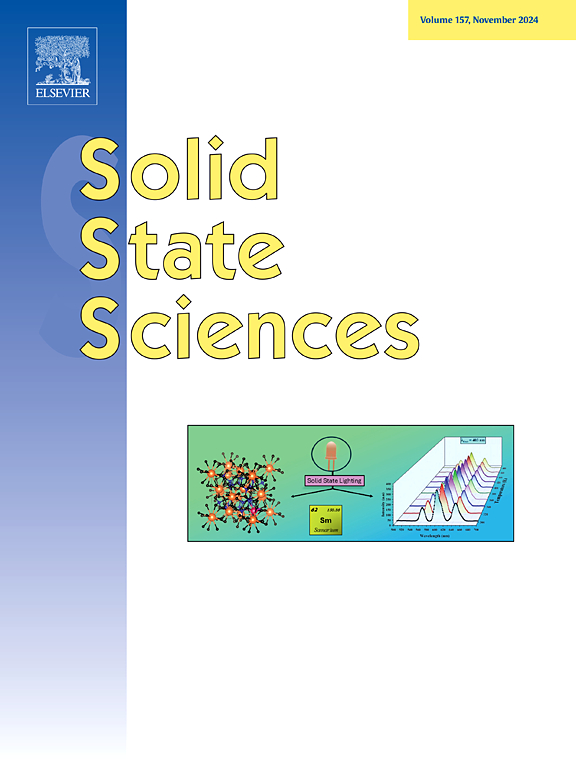Augmenting the broadband feature in CdS CQDs thin film photodetectors by Ag assimilation
IF 3.4
3区 化学
Q2 CHEMISTRY, INORGANIC & NUCLEAR
引用次数: 0
Abstract
High-performance photodetectors (PDs) with broadband (BB) responses are crucial for many optoelectronic and imaging technologies. In the present work, BBPDs were fabricated employing simple spin coated thin films (TFs) of Cd(1-x)AgxS colloidal quantum dots (CQDs), where x = 0.0 to 0.05. The x-ray diffraction (XRD) patterns of TFs confirm the formation of a cubic phase with a crystallite size very close to Bohr's atomic radius. The existence of microstructural defects like twinning/multiple twinning was confirmed by HRTEM images of the undoped and 3 wt% Ag-doped CdS QDs. The spectral tunability along with modifications in detector characteristic parameters were observed with varying concentrations of Ag. The maximum value of various performance parameters like sensitivity (S), responsivity (R), detectivity (D), and external quantum efficiency (EQE) were estimated as ∼ 1.95 × 104 %, 14.67 A/W, 4.84 × 1012 cmHz1/2W−1, and 3.8 × 103 %, respectively. Besides, the response speed of PD was also improved by twofold due to the insertion of Ag. The fastest PD responds within 104 ms (rise time)/98 ms (fall time). The present work demonstrates BB spectral (405 nm–845 nm) detection by Cd(1-x)AgxS CQDs-based PDs and tunability in the selectivity and detectable wavelength with variation of Ag dopant. The device S3 is the fastest and demonstrated the highest S and D among all devices under 782 nm illumination; however, S1 is optimised for PD in the present study as it delivered the best performance in the said BB spectral region with a reasonably good response speed of 200 ms.

求助全文
约1分钟内获得全文
求助全文
来源期刊

Solid State Sciences
化学-无机化学与核化学
CiteScore
6.60
自引率
2.90%
发文量
214
审稿时长
27 days
期刊介绍:
Solid State Sciences is the journal for researchers from the broad solid state chemistry and physics community. It publishes key articles on all aspects of solid state synthesis, structure-property relationships, theory and functionalities, in relation with experiments.
Key topics for stand-alone papers and special issues:
-Novel ways of synthesis, inorganic functional materials, including porous and glassy materials, hybrid organic-inorganic compounds and nanomaterials
-Physical properties, emphasizing but not limited to the electrical, magnetical and optical features
-Materials related to information technology and energy and environmental sciences.
The journal publishes feature articles from experts in the field upon invitation.
Solid State Sciences - your gateway to energy-related materials.
 求助内容:
求助内容: 应助结果提醒方式:
应助结果提醒方式:


